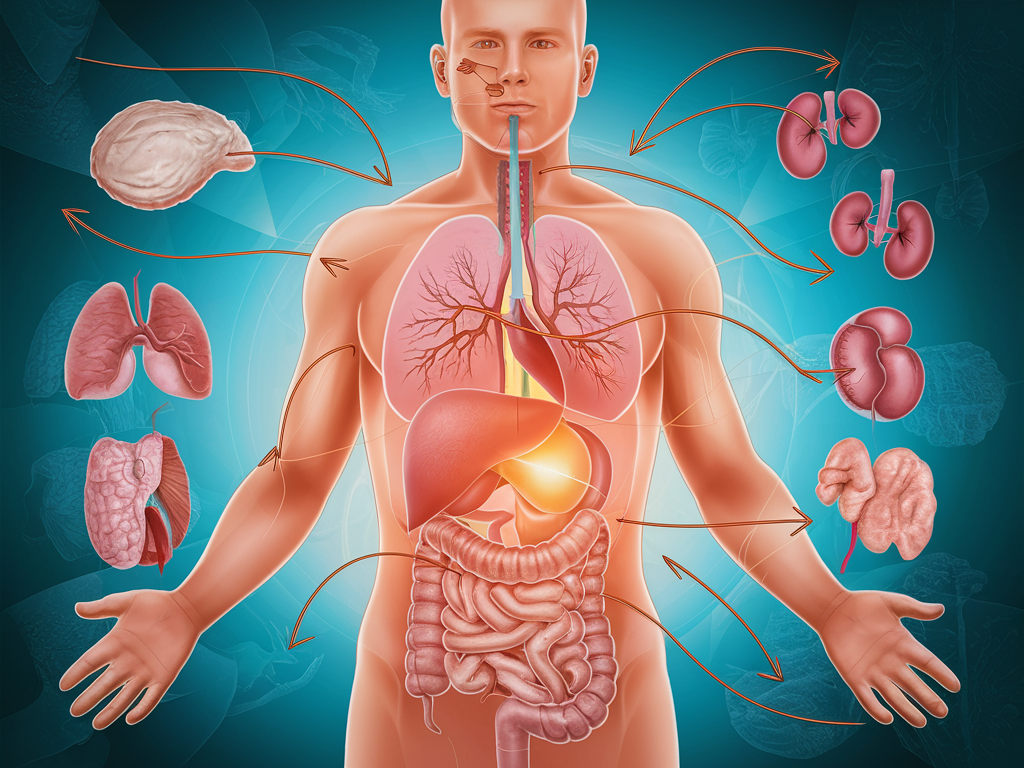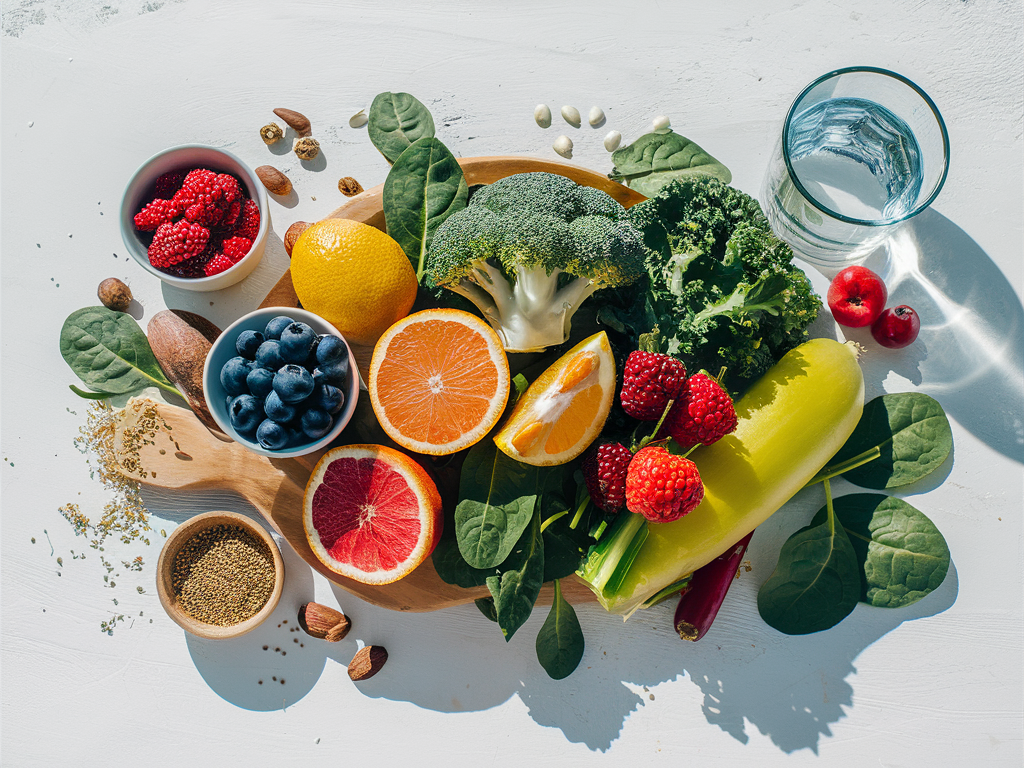The concept of “detoxing” has become increasingly popular in wellness circles, but separating fact from fiction can be challenging. While many commercial detox programs make extravagant claims, the scientific reality is more nuanced. Your body already has sophisticated systems in place to eliminate waste and neutralize harmful substances. The key to effective detoxification isn’t found in extreme cleanses or expensive supplements, but in supporting your body’s natural processes through evidence-based methods.
Understanding Your Body’s Natural Detoxification Systems
Before exploring specific detoxification strategies, it’s essential to understand how your body naturally processes and eliminates toxins. The human body has evolved several remarkable systems specifically designed for this purpose:
- Liver: Your primary detoxification organ, metabolizing medications, alcohol, and filtering toxins from the bloodstream through complex enzymatic processes
- Kidneys: Filter blood to remove waste and excess substances, creating urine to transport these compounds out of the body
- Digestive system: Eliminates waste through regular bowel movements while the intestinal barrier prevents harmful substances from entering the bloodstream
- Skin: Eliminates certain toxins through sweat
- Lungs: Remove gaseous waste products like carbon dioxide through exhalation
Toxins enter our bodies through various routes—the food we eat, the air we breathe, and even through skin absorption. When these natural detoxification pathways become overwhelmed or function suboptimally, you might experience symptoms like persistent fatigue, digestive issues, skin problems, or frequent headaches.
While many commercial “detox” programs promise quick fixes, most lack scientific support. The evidence-based approaches outlined below focus on enhancing your body’s natural detoxification processes rather than relying on unproven quick fixes.

Method #1: Stay Adequately Hydrated
Water is fundamental to virtually every biological process, including detoxification. Proper hydration supports kidney function, allowing these vital organs to efficiently filter waste products from your blood. When adequately hydrated, your kidneys can effectively eliminate toxins through urine, one of your body’s primary detoxification mechanisms.
Research indicates that even mild dehydration can reduce kidney function and impair toxin elimination. The National Academies of Sciences, Engineering, and Medicine recommends approximately 3.7 liters (125 ounces) of total fluid intake daily for men and 2.7 liters (91 ounces) for women, though individual needs vary based on activity level, climate, and overall health.
To maintain optimal hydration:
- Carry a reusable water bottle throughout the day
- Set regular hydration reminders on your phone
- Consume hydrating foods like cucumbers, watermelon, and citrus fruits
- Monitor urine color—pale yellow typically indicates proper hydration
Method #2: Prioritize Nutrient-Dense Foods
Your diet provides the building blocks your body needs to support detoxification pathways, particularly in the liver. Certain foods are especially beneficial for enhancing your natural detoxification processes:
Cruciferous vegetables like broccoli, cauliflower, and Brussels sprouts contain glucosinolates, compounds that support liver enzyme production. These enzymes help convert toxins into forms that can be more easily eliminated from the body. Research published in the Journal of Nutrition demonstrates that these vegetables increase the body’s production of detoxification enzymes.
Leafy greens such as kale, spinach, and arugula provide essential nutrients including folate, vitamin C, and chlorophyll. These nutrients support methylation and other biochemical processes involved in detoxification. A study in the American Journal of Clinical Nutrition found that increased consumption of leafy greens was associated with reduced markers of oxidative stress.
Berries and colorful fruits deliver powerful antioxidants that protect cells from oxidative damage during the detoxification process. Compounds like anthocyanins in blueberries and ellagic acid in pomegranates have been shown to support liver function and reduce inflammation.
Dietary fiber plays a crucial role in toxin elimination by binding to toxins in the digestive tract and facilitating their removal through regular bowel movements. Aim for 25-30 grams of fiber daily from diverse sources including whole grains, legumes, fruits, and vegetables.
To incorporate these detox-supporting foods into your routine:
- Begin your day with a smoothie containing leafy greens, berries, and a source of fiber
- Include at least one cruciferous vegetable in your daily meals
- Replace refined grains with whole grains like brown rice, quinoa, and oats
- Keep colorful fruits available for convenient snacking
Method #3: Reduce Processed Food Consumption
While adding beneficial foods to your diet is important, equally crucial is reducing your intake of substances that burden your detoxification systems. Highly processed foods often contain artificial additives, preservatives, and compounds that require additional detoxification resources from your body.
Common problematic ingredients include:
- Artificial colors and flavors
- Preservatives like BHA, BHT, and sodium nitrite
- High-fructose corn syrup
- Trans fats and partially hydrogenated oils
- Artificial sweeteners
These substances can increase oxidative stress, promote inflammation, and tax your liver’s detoxification pathways. Research published in the journal Environmental Health Perspectives has linked prolonged exposure to certain food additives with altered gut microbiome composition and potential adverse health effects.
To reduce your processed food intake:
- Shop primarily from the perimeter of grocery stores, where fresh foods are typically located
- Read ingredient labels carefully, avoiding products with lengthy lists of unfamiliar ingredients
- Prepare more meals at home, where you control the ingredients
- Replace packaged snacks with whole food alternatives like nuts, fruits, and vegetables
Method #4: Support Gut Health
Your gastrointestinal tract plays a surprisingly important role in detoxification. A healthy gut microbiome helps break down toxins and prevents their absorption into the bloodstream. Your intestinal lining acts as a critical barrier, preventing harmful substances from entering your systemic circulation while allowing nutrients to be absorbed.
When gut health is compromised—through poor diet, stress, or other factors—this barrier function can be impaired, a condition sometimes called “leaky gut.” This allows more toxins to enter your bloodstream, increasing the burden on your liver and other detoxification organs.
Research published in Nature Reviews Gastroenterology & Hepatology demonstrates that beneficial gut bacteria can directly metabolize certain environmental toxins and heavy metals, transforming them into less harmful substances.
To support gut health:
- Consume probiotic foods like yogurt, kefir, sauerkraut, and kimchi to introduce beneficial bacteria
- Include prebiotic foods such as garlic, onions, asparagus, and bananas to nourish your existing gut bacteria
- Minimize use of antibiotics when not medically necessary
- Reduce intake of emulsifiers (common in processed foods) which can disrupt the gut barrier
Signs of improved gut function include more regular bowel movements, reduced bloating and gas, and fewer digestive complaints.

Method #5: Regular Physical Activity
Exercise contributes to detoxification through multiple mechanisms. When you exercise, increased circulation helps deliver nutrients to detoxification organs while removing waste products more efficiently. Regular physical activity also stimulates sweating, which can eliminate certain toxins through the skin.
Perhaps most significantly, exercise supports the lymphatic system—a network of vessels that helps clear cellular waste and toxins. Unlike the circulatory system, the lymphatic system lacks a pump, relying instead on physical movement to propel lymph fluid throughout the body.
Research published in the Journal of Applied Physiology demonstrates that regular exercise enhances cellular detoxification processes and improves mitochondrial function, helping cells process energy more efficiently while producing fewer toxic byproducts.
For detoxification support:
- Aim for at least 150 minutes of moderate-intensity exercise weekly
- Include both cardiovascular exercise and strength training
- Consider activities that promote lymphatic flow, such as rebounding (jumping on a mini-trampoline), swimming, or yoga
- Stay hydrated during and after exercise to support the elimination of toxins through sweat
Method #6: Ensure Quality Sleep
Sleep is when your body conducts much of its cellular repair and detoxification work. During deep sleep, your brain activates the glymphatic system—a recently discovered waste clearance mechanism that removes toxins and metabolic byproducts from the central nervous system.
Research published in Science demonstrated that during sleep, brain cells actually shrink slightly, allowing cerebrospinal fluid to flow more freely between them and wash away accumulated toxins, including proteins associated with neurodegenerative diseases. This process is up to 10 times more active during sleep than wakefulness.
To optimize sleep quality for detoxification:
- Aim for 7-9 hours of quality sleep each night
- Maintain a consistent sleep schedule, even on weekends
- Create a dark, cool, quiet sleeping environment
- Limit screen time for at least one hour before bed
- Establish a relaxing bedtime routine
- Avoid caffeine after midday and alcohol close to bedtime
Method #7: Practice Intermittent Fasting
Emerging research suggests that intermittent fasting—cycling between periods of eating and fasting—may enhance your body’s natural detoxification processes. During fasting periods, your cells activate a process called autophagy, a cellular “cleanup” mechanism that breaks down and recycles damaged components and potentially harmful substances.
A study published in Cell Research found that fasting periods trigger significant increases in autophagy, potentially enhancing the body’s ability to remove toxins and damaged cellular materials. This cellular renewal process may help reduce inflammation and oxidative stress while supporting metabolic health.
Common approaches to intermittent fasting include:
- 16/8 method: Restricting eating to an 8-hour window daily (e.g., 10am-6pm)
- 5:2 approach: Eating normally five days per week, with caloric restriction on two non-consecutive days
- Eat-stop-eat: Incorporating one or two 24-hour fasts weekly
Important safety considerations: Intermittent fasting isn’t appropriate for everyone. Pregnant or breastfeeding women, those with certain medical conditions (including diabetes), individuals with a history of eating disorders, and children should avoid fasting. Always consult with a healthcare provider before beginning any fasting regimen.
Method #8: Minimize Environmental Toxin Exposure
While it’s impossible to avoid all environmental toxins, reducing your overall exposure can significantly decrease the burden on your detoxification organs. Common sources of toxin exposure include:
- Household cleaning products containing harsh chemicals
- Pesticides and herbicides on conventionally grown produce
- Plastics containing BPA and phthalates
- Heavy metals in certain seafood, water sources, and household items
- Air pollution, both outdoor and indoor
- Personal care products containing parabens, phthalates, and artificial fragrances
To reduce your toxic burden:
- Switch to natural cleaning products or make your own using ingredients like vinegar, baking soda, and essential oils
- Choose organic produce when possible, especially for the “dirty dozen” foods most likely to contain pesticide residues
- Filter your drinking and cooking water
- Use glass, stainless steel, or ceramic containers instead of plastic, especially for hot foods
- Select personal care products with minimal, natural ingredients
- Improve indoor air quality with proper ventilation and air-purifying plants
- Remove shoes before entering your home to avoid tracking in outdoor contaminants
Method #9: Support Liver Health With Specific Nutrients
Your liver is the primary detoxification organ, housing complex enzyme systems that transform toxins into less harmful substances that can be eliminated. Specific nutrients support these enzymatic pathways:
- Glutathione: Often called the body’s master antioxidant, glutathione plays a crucial role in detoxifying various substances. Your body produces it from amino acids (cysteine, glycine, and glutamine) found in foods like garlic, onions, cruciferous vegetables, avocados, and undenatured whey protein.
- B vitamins: These water-soluble vitamins support various detoxification pathways. Find them in whole grains, legumes, leafy greens, and nutritional yeast.
- Sulfur-containing compounds: Found in garlic, onions, and eggs, these compounds support phase II liver detoxification.
- Antioxidants: Vitamins C and E, selenium, and plant compounds like flavonoids protect liver cells from damage during detoxification processes.
Certain herbs have demonstrated liver-supportive properties in scientific research:
- Milk thistle (Silybum marianum): Contains silymarin, which has been shown to protect liver cells from toxins and support liver regeneration
- Turmeric: Contains curcumin, which has powerful anti-inflammatory and antioxidant properties that support liver function
- Dandelion root: Traditionally used to support liver health, with some modern research supporting its beneficial effects
While supplements are available, obtaining these nutrients from whole foods is generally preferable, as foods contain complementary compounds that may enhance absorption and effectiveness. If considering supplements, consult with a healthcare provider, as some may interact with medications or be contraindicated for certain health conditions.

Method #10: Manage Stress Effectively
Chronic stress can significantly impair your body’s detoxification abilities. During stress, your body prioritizes immediate survival functions over detoxification and repair processes. Prolonged stress can alter gut function, impair immune responses, and reduce liver metabolism of toxins.
Research published in the Proceedings of the National Academy of Sciences demonstrates that psychological stress can increase inflammation and oxidative stress, both of which can impair detoxification pathways.
Evidence-based stress reduction techniques include:
- Mindfulness meditation: Research shows regular meditation practice can reduce cortisol levels and inflammation markers. Even 10-15 minutes daily can provide benefits.
- Breathwork: Simple techniques like diaphragmatic breathing or the 4-7-8 breath can activate your parasympathetic nervous system, counteracting stress responses.
- Nature exposure: Studies demonstrate that spending time in natural environments reduces stress hormones and improves mood. Aim for at least 120 minutes weekly in natural settings.
- Movement practices: Yoga, tai chi, and qigong combine physical activity with mindfulness, effectively reducing stress while supporting lymphatic flow and detoxification.
To track your progress with stress reduction, consider monitoring subjective feelings of stress, sleep quality, energy levels, and even objective measures like heart rate variability if available.
Creating Your Personalized Detox Plan
Rather than attempting to implement all these methods simultaneously, consider a gradual approach that builds sustainable habits. Begin with areas that seem most manageable or appeal to you most:
- Start with 1-3 approaches that feel most accessible
- Implement changes gradually, allowing your body and routine to adjust
- Track your progress and note any changes in energy, digestion, sleep, skin clarity, and overall wellbeing
- Add additional strategies as initial changes become habitual
- Adjust based on your body’s responses
Consider consulting with healthcare professionals such as:
- A registered dietitian for personalized nutritional guidance
- An integrative or functional medicine practitioner for comprehensive assessment
- A healthcare provider if you have existing health conditions or take medications
Those with specific health conditions should always consult healthcare providers before making significant lifestyle changes, especially regarding fasting, supplementation, or exercise regimens.
Conclusion
True detoxification isn’t about drastic cleanses or quick fixes but supporting your body’s sophisticated natural processes. The evidence-based approaches outlined above—proper hydration, nutrient-dense foods, reduced toxin exposure, quality sleep, regular movement, stress management, and other supportive practices—work synergistically to enhance your body’s innate detoxification capabilities.
The most effective detoxification strategy is one you can maintain consistently. Small, sustainable changes often yield greater benefits than periodic extreme measures. By supporting your body’s natural detoxification systems, you’re not just eliminating toxins more efficiently—you’re enhancing overall wellness, energy levels, and resilience.
Remember that detoxification is an ongoing process, not a one-time event. The habits that support detoxification also promote general health, creating a foundation for sustainable wellness.
Which of these evidence-based detoxification methods will you incorporate into your routine first? Your body’s natural cleansing systems await your support.

